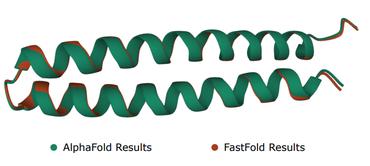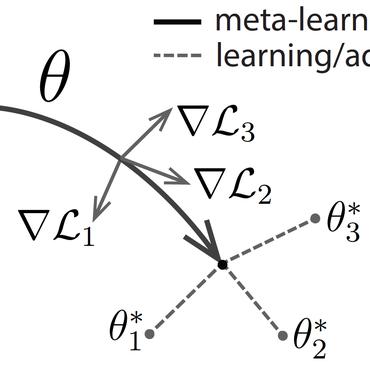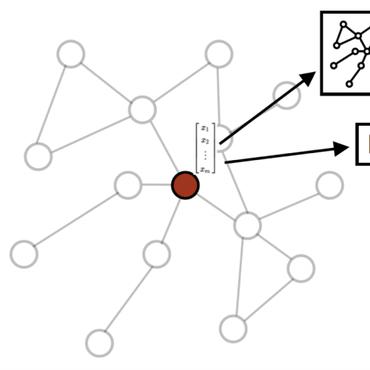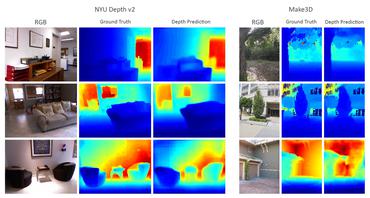Search Results for author: Fan Yu
Found 33 papers, 14 papers with code
An Embarrassingly Simple Approach for LLM with Strong ASR Capacity
no code implementations • 13 Feb 2024 • Ziyang Ma, Guanrou Yang, Yifan Yang, Zhifu Gao, JiaMing Wang, Zhihao Du, Fan Yu, Qian Chen, Siqi Zheng, Shiliang Zhang, Xie Chen
We found that delicate designs are not necessary, while an embarrassingly simple composition of off-the-shelf speech encoder, LLM, and the only trainable linear projector is competent for the ASR task.
 Automatic Speech Recognition
Automatic Speech Recognition
 Automatic Speech Recognition (ASR)
+1
Automatic Speech Recognition (ASR)
+1
BA-SOT: Boundary-Aware Serialized Output Training for Multi-Talker ASR
no code implementations • 23 May 2023 • Yuhao Liang, Fan Yu, Yangze Li, Pengcheng Guo, Shiliang Zhang, Qian Chen, Lei Xie
The recently proposed serialized output training (SOT) simplifies multi-talker automatic speech recognition (ASR) by generating speaker transcriptions separated by a special token.
 Automatic Speech Recognition
Automatic Speech Recognition
 Automatic Speech Recognition (ASR)
+3
Automatic Speech Recognition (ASR)
+3
CASA-ASR: Context-Aware Speaker-Attributed ASR
no code implementations • 21 May 2023 • Mohan Shi, Zhihao Du, Qian Chen, Fan Yu, Yangze Li, Shiliang Zhang, Jie Zhang, Li-Rong Dai
In addition, a two-pass decoding strategy is further proposed to fully leverage the contextual modeling ability resulting in a better recognition performance.
A Comparative Study on Multichannel Speaker-Attributed Automatic Speech Recognition in Multi-party Meetings
no code implementations • 1 Nov 2022 • Mohan Shi, Jie Zhang, Zhihao Du, Fan Yu, Qian Chen, Shiliang Zhang, Li-Rong Dai
Speaker-attributed automatic speech recognition (SA-ASR) in multi-party meeting scenarios is one of the most valuable and challenging ASR task.
 Automatic Speech Recognition
Automatic Speech Recognition
 Automatic Speech Recognition (ASR)
+4
Automatic Speech Recognition (ASR)
+4
Merlin HugeCTR: GPU-accelerated Recommender System Training and Inference
no code implementations • 17 Oct 2022 • Joey Wang, Yingcan Wei, Minseok Lee, Matthias Langer, Fan Yu, Jie Liu, Alex Liu, Daniel Abel, Gems Guo, Jianbing Dong, Jerry Shi, Kunlun Li
In this talk, we introduce Merlin HugeCTR.
A GPU-specialized Inference Parameter Server for Large-Scale Deep Recommendation Models
1 code implementation • 17 Oct 2022 • Yingcan Wei, Matthias Langer, Fan Yu, Minseok Lee, Kingsley Liu, Jerry Shi, Joey Wang
Recommendation systems are of crucial importance for a variety of modern apps and web services, such as news feeds, social networks, e-commerce, search, etc.
Unsupervisedly Prompting AlphaFold2 for Few-Shot Learning of Accurate Folding Landscape and Protein Structure Prediction
2 code implementations • 20 Aug 2022 • Jun Zhang, Sirui Liu, Mengyun Chen, Haotian Chu, Min Wang, Zidong Wang, Jialiang Yu, Ningxi Ni, Fan Yu, Diqing Chen, Yi Isaac Yang, Boxin Xue, Lijiang Yang, YuAn Liu, Yi Qin Gao
Data-driven predictive methods which can efficiently and accurately transform protein sequences into biologically active structures are highly valuable for scientific research and medical development.
A Universal PINNs Method for Solving Partial Differential Equations with a Point Source
1 code implementation • Proceedings of the Thirty-First International Joint Conference on Artificial Intelligence 2022 • Xiang Huang, Hongsheng Liu, Beiji Shi, Zidong Wang, Kang Yang, Yang Li, Min Wang, Haotian Chu, Jing Zhou, Fan Yu, Bei Hua, Bin Dong, Lei Chen
In recent years, deep learning technology has been used to solve partial differential equations (PDEs), among which the physics-informed neural networks (PINNs)method emerges to be a promising method for solving both forward and inverse PDE problems.
PSP: Million-level Protein Sequence Dataset for Protein Structure Prediction
2 code implementations • 24 Jun 2022 • Sirui Liu, Jun Zhang, Haotian Chu, Min Wang, Boxin Xue, Ningxi Ni, Jialiang Yu, Yuhao Xie, Zhenyu Chen, Mengyun Chen, YuAn Liu, Piya Patra, Fan Xu, Jie Chen, Zidong Wang, Lijiang Yang, Fan Yu, Lei Chen, Yi Qin Gao
We provide in addition the benchmark training procedure for SOTA protein structure prediction model on this dataset.
A Comparative Study on Speaker-attributed Automatic Speech Recognition in Multi-party Meetings
no code implementations • 31 Mar 2022 • Fan Yu, Zhihao Du, Shiliang Zhang, Yuxiao Lin, Lei Xie
Therefore, we propose the second approach, WD-SOT, to address alignment errors by introducing a word-level diarization model, which can get rid of such timestamp alignment dependency.
 Automatic Speech Recognition
Automatic Speech Recognition
 Automatic Speech Recognition (ASR)
+2
Automatic Speech Recognition (ASR)
+2
Hyperlink-induced Pre-training for Passage Retrieval in Open-domain Question Answering
1 code implementation • ACL 2022 • Jiawei Zhou, Xiaoguang Li, Lifeng Shang, Lan Luo, Ke Zhan, Enrui Hu, Xinyu Zhang, Hao Jiang, Zhao Cao, Fan Yu, Xin Jiang, Qun Liu, Lei Chen
To alleviate the data scarcity problem in training question answering systems, recent works propose additional intermediate pre-training for dense passage retrieval (DPR).
Meta-Auto-Decoder for Solving Parametric Partial Differential Equations
no code implementations • 15 Nov 2021 • Xiang Huang, Zhanhong Ye, Hongsheng Liu, Beiji Shi, Zidong Wang, Kang Yang, Yang Li, Bingya Weng, Min Wang, Haotian Chu, Fan Yu, Bei Hua, Lei Chen, Bin Dong
Many important problems in science and engineering require solving the so-called parametric partial differential equations (PDEs), i. e., PDEs with different physical parameters, boundary conditions, shapes of computation domains, etc.
Solving Partial Differential Equations with Point Source Based on Physics-Informed Neural Networks
no code implementations • 2 Nov 2021 • Xiang Huang, Hongsheng Liu, Beiji Shi, Zidong Wang, Kang Yang, Yang Li, Bingya Weng, Min Wang, Haotian Chu, Jing Zhou, Fan Yu, Bei Hua, Lei Chen, Bin Dong
In recent years, deep learning technology has been used to solve partial differential equations (PDEs), among which the physics-informed neural networks (PINNs) emerges to be a promising method for solving both forward and inverse PDE problems.
You Ought to Look Around: Precise, Large Span Action Detection
no code implementations • 25th International Conference on Pattern Recognition (ICPR) 2021 • Ge Pan, Han Zhang, Fan Yu, Yonghong Song, Yuanlin Zhang, Han Yuan
In this paper, we propose a method called YOLA (You Ought to Look Around) which includes three parts: 1) a robust backbone SPN-I3D for extracting spatio-temporal features.
Towards More Effective and Economic Sparsely-Activated Model
no code implementations • 14 Oct 2021 • Hao Jiang, Ke Zhan, Jianwei Qu, Yongkang Wu, Zhaoye Fei, Xinyu Zhang, Lei Chen, Zhicheng Dou, Xipeng Qiu, Zikai Guo, Ruofei Lai, Jiawen Wu, Enrui Hu, Yinxia Zhang, Yantao Jia, Fan Yu, Zhao Cao
To increase the number of activated experts without an increase in computational cost, we propose SAM (Switch and Mixture) routing, an efficient hierarchical routing mechanism that activates multiple experts in a same device (GPU).
iVPF: Numerical Invertible Volume Preserving Flow for Efficient Lossless Compression
4 code implementations • CVPR 2021 • Changsu Cao, Jiaqi Hu, Wengang Zhang, Xusheng Xu, Dechin Chen, Fan Yu, Jun Li, Hanshi Hu, Dingshun Lv, Man-Hong Yung
We also propose a lossless compression algorithm based on iVPF.
Answer Complex Questions: Path Ranker Is All You Need
3 code implementations • Proceedings of the 44th International ACM SIGIR Conference on Research and Development in Information Retrieval 2021 • Xinyu Zhang, Ke Zhan, Enrui Hu, Chengzhen Fu, Lan Luo, Hao Jiang, Yantao Jia, Fan Yu, Zhicheng Dou, Zhao Cao, Lei Chen
Currently, the most popular method for open-domain Question Answering (QA) adopts "Retriever and Reader" pipeline, where the retriever extracts a list of candidate documents from a large set of documents followed by a ranker to rank the most relevant documents and the reader extracts answer from the candidates.
SKFAC: Training Neural Networks With Faster Kronecker-Factored Approximate Curvature
1 code implementation • CVPR 2021 • Zedong Tang, Fenlong Jiang, Maoguo Gong, Hao Li, Yue Wu, Fan Yu, Zidong Wang, Min Wang
For the fully connected layers, by utilizing the low-rank property of Kronecker factors of Fisher information matrix, our method only requires inverting a small matrix to approximate the curvature with desirable accuracy.
Vertex-Centric Visual Programming for Graph Neural Networks
no code implementations • Proceedings of the 2021 International Conference on Management of Data 2021 • Yidi Wu, Yuntao Gui, Tatiana Jin, James Cheng, Xiao Yan, Peiqi Yin, Yufei Cai, Bo Tang, Fan Yu
Graph neural networks (GNNs) have achieved remarkable performance in many graph analytics tasks such as node classification, link prediction and graph clustering.
SKFAC:Training Neural Networks with Faster Kronecker-Factored Approximate Curvature
1 code implementation • Proceedings of the IEEE/CVF Conference on Computer Vision and Pattern Recognition 2021 • Zedong Tang, Fenlong Jiang, Maoguo Gong, Hao Li, Yue Wu, Fan Yu, Zidong Wang, Min Wang
For the fully connected layers, by utilizing the low-rank property of Kronecker factors of Fisher information matrix, our method only requires inverting a small matrix to approximate the curvature with desirable accuracy.
THOR, Trace-based Hardware-adaptive layer-ORiented Natural Gradient Descent Computation
no code implementations • AAAI Technical Track on Machine Learning 2021 • Mengyun Chen, Kaixin Gao, Xiaolei Liu, Zidong Wang, Ningxi Ni, Qian Zhang, Lei Chen, Chao Ding, ZhengHai Huang, Min Wang, Shuangling Wang, Fan Yu, Xinyuan Zhao, Dachuan Xu
It is well-known that second-order optimizer can accelerate the training of deep neural networks, however, the huge computation cost of second-order optimization makes it impractical to apply in real practice.
DGCL: an efficient communication library for distributed GNN training
1 code implementation • Proceedings of the Sixteenth European Conference on Computer Systems 2021 • Zhenkun Cai, Xiao Yan, Yidi Wu, Kaihao Ma, James Cheng, Fan Yu
Graph neural networks (GNNs) have gained increasing popularity in many areas such as e-commerce, social networks and bio-informatics.
Seastar: vertex-centric programming for graph neural networks
no code implementations • Proceedings of the Sixteenth European Conference on Computer Systems 2021 • Yidi Wu, Kaihao Ma, Zhenkun Cai, Tatiana Jin, Boyang Li, Chenguang Zheng, James Cheng, Fan Yu
Graph neural networks (GNNs) have achieved breakthrough performance in graph analytics such as node classification, link prediction and graph clustering.
Elastic Deep Learning in Multi-Tenant GPU Clusters
no code implementations • IEEE Transactions on Parallel and Distributed Systems 2021 • Yidi Wu, Kaihao Ma, Xiao Yan, Zhi Liu, Zhenkun Cai, Yuzhen Huang, James Cheng, Han Yuan, Fan Yu
We study how to support elasticity, that is, the ability to dynamically adjust the parallelism (i. e., the number of GPUs), for deep neural network (DNN) training in a GPU cluster.
WeNet: Production oriented Streaming and Non-streaming End-to-End Speech Recognition Toolkit
4 code implementations • 2 Feb 2021 • Zhuoyuan Yao, Di wu, Xiong Wang, BinBin Zhang, Fan Yu, Chao Yang, Zhendong Peng, Xiaoyu Chen, Lei Xie, Xin Lei
In this paper, we propose an open source, production first, and production ready speech recognition toolkit called WeNet in which a new two-pass approach is implemented to unify streaming and non-streaming end-to-end (E2E) speech recognition in a single model.
EPP-MVSNet: Epipolar-Assembling Based Depth Prediction for Multi-View Stereo
6 code implementations • ICCV 2021 • Xinjun Ma, Yue Gong, Qirui Wang, Jingwei Huang, Lei Chen, Fan Yu
As a result, we achieve promising results on all datasets and the highest F-Score on the online TNT intermediate benchmark.
 Ranked #8 on
Point Clouds
on Tanks and Temples
Ranked #8 on
Point Clouds
on Tanks and Temples
AsymptoticNG: A regularized natural gradient optimization algorithm with look-ahead strategy
no code implementations • 24 Dec 2020 • Zedong Tang, Fenlong Jiang, Junke Song, Maoguo Gong, Hao Li, Fan Yu, Zidong Wang, Min Wang
Optimizers that further adjust the scale of gradient, such as Adam, Natural Gradient (NG), etc., despite widely concerned and used by the community, are often found poor generalization performance, compared with Stochastic Gradient Descent (SGD).
Unified Streaming and Non-streaming Two-pass End-to-end Model for Speech Recognition
5 code implementations • 10 Dec 2020 • BinBin Zhang, Di wu, Zhuoyuan Yao, Xiong Wang, Fan Yu, Chao Yang, Liyong Guo, Yaguang Hu, Lei Xie, Xin Lei
In this paper, we present a novel two-pass approach to unify streaming and non-streaming end-to-end (E2E) speech recognition in a single model.
 Ranked #6 on
Speech Recognition
on AISHELL-1
Ranked #6 on
Speech Recognition
on AISHELL-1
Eigenvalue-corrected Natural Gradient Based on a New Approximation
no code implementations • 27 Nov 2020 • Kai-Xin Gao, Xiao-Lei Liu, Zheng-Hai Huang, Min Wang, Shuangling Wang, Zidong Wang, Dachuan Xu, Fan Yu
Using second-order optimization methods for training deep neural networks (DNNs) has attracted many researchers.
A Trace-restricted Kronecker-Factored Approximation to Natural Gradient
no code implementations • 21 Nov 2020 • Kai-Xin Gao, Xiao-Lei Liu, Zheng-Hai Huang, Min Wang, Zidong Wang, Dachuan Xu, Fan Yu
There have been many attempts to use second-order optimization methods for training deep neural networks.
The SLT 2021 children speech recognition challenge: Open datasets, rules and baselines
no code implementations • 13 Nov 2020 • Fan Yu, Zhuoyuan Yao, Xiong Wang, Keyu An, Lei Xie, Zhijian Ou, Bo Liu, Xiulin Li, Guanqiong Miao
Automatic speech recognition (ASR) has been significantly advanced with the use of deep learning and big data.
Sound Audio and Speech Processing
The energy technique for the six-step BDF method
no code implementations • 17 Jul 2020 • Georgios Akrivis, Minghua Chen, Fan Yu, Zhi Zhou
In combination with the Grenander--Szeg\"o theorem, we observe that a relaxed positivity condition on multipliers, milder than the basic %fundamental requirement of the Nevanlinna--Odeh multipliers that the sum of the absolute values of their components is strictly less than $1$, makes the energy technique applicable to the stability analysis of BDF methods for parabolic equations with selfadjoint elliptic part.
Numerical Analysis Numerical Analysis
TensorOpt: Exploring the Tradeoffs in Distributed DNN Training with Auto-Parallelism
1 code implementation • 16 Apr 2020 • Zhenkun Cai, Kaihao Ma, Xiao Yan, Yidi Wu, Yuzhen Huang, James Cheng, Teng Su, Fan Yu
A good parallelization strategy can significantly improve the efficiency or reduce the cost for the distributed training of deep neural networks (DNNs).









